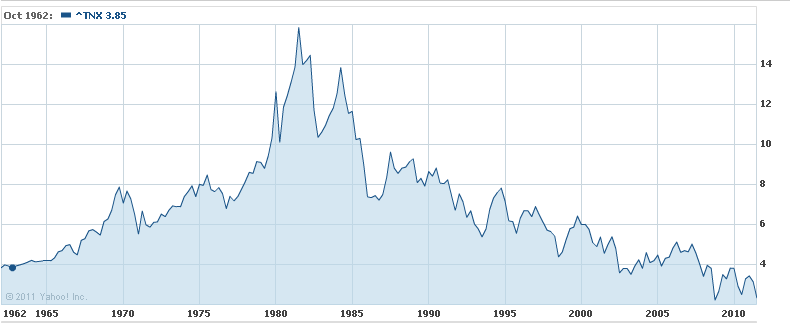The extreme gyrations in the stock market over the past week create great headlines and quite a bit of trading activity. Equally if not more important for retirees, however, is the related action in bond markets.

The sputtering economy and related equity market hiccups have an interest rate corollary: a weak economy and declining markets tend to result in very low interest rates.
Bond prices and interest rates move in the opposite direction, so bond prices rise when interest rates take a dive to historically low levels.
This bull market in bonds has lasted—more or less—for the past 30 years. In the early 1980s, the 10 year Treasury yielded over fifteen percent. It has been a long and fairly consistent road down to current levels that hover just above 2 percent.
Whether this bull market is on its last legs is a matter of great uncertainty and is a very high stakes debate.
As far as retirees are concerned, the current interest rate environment should be considered catastrophic.
Retirees should think of their finances the same way that a pension plan manager thinks about their job.
There is a reason why pension plan liabilities increase when interest rates decrease—the cost of providing a future stream of payments (a pension plan exists to make payments to retirees) increases when interest rates decrease.
Consider the difference between several rate levels for a retiree who needs to generate $1,000 in monthly income over the course of 20 years:
- Using a rate of 5 percent, the amount of money that is required to generate $12,000 per year for 20 years is $151,525.
- Using a rate of 3.5 percent, the amount of money that is required to generate $12,000 per year for 20 years is $172,425.
- Using a rate of 2 percent, the amount of money that is required to generate $12,000 per year for 20 years is $197,674.
- Just for fun, let’s push the rewind button and go back to the early 1980s when rates were hovering around 15 percent. Using a rate of 15 percent, the amount of money that is required to generate $12,000 per year for 20 years is $75,942.
Retirees should remember that retirement gets more expensive every time the Fed comes to the rescue of the markets and banks with some sort of extremely accommodative policy (think zero interest rates through 2013).
- tom's blog
- Log in to post comments

